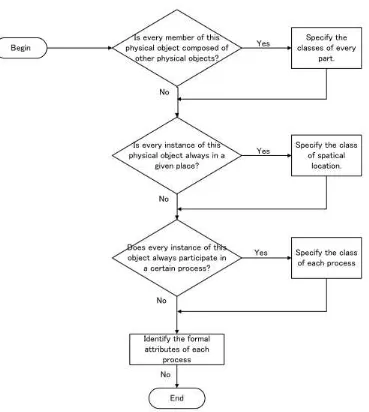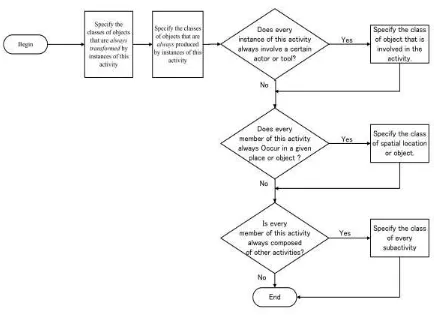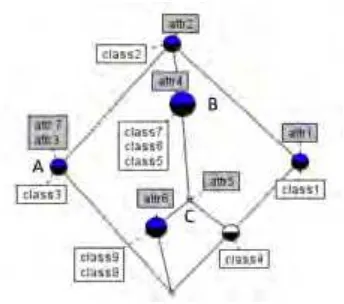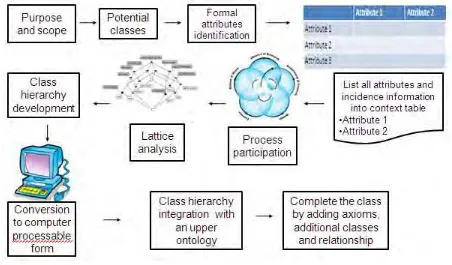UNIVERSITI TEKNIKAL MALAYSIA MELAKA
STUDY THE ATTRIBUTES OF PRODUCTS AND PROCESSES
FOR AUTOMOTIVE PRODUCT DEVELOPMENT:
EXTERIOR AND INTERIOR PARTS
This report submitted in accordance with requirement of the Universiti Teknikal Malaysia Melaka (UTeM) for the Bachelor Degree of Manufacturing Engineering
(Manufacturing Design) (Hons.)
by
TATY NAHDATUL FAIQAH BINTI KAMARUDIN
B051110112
921118-10-5374
UNIVERSITI TEKNIKAL MALAYSIA MELAKA
BORANG PENGESAHAN STATUS LAPORAN PROJEK SARJANA MUDA
TAJUK: Study the Attributes of Products and Processes For Automotive Product Development: Exterior and Interior Parts
SESI PENGAJIAN: 2014/15 Semester 2
Saya TATY NAHDATUL FAIQAH BINTI KAMARUDIN
mengaku membenarkan Laporan PSM ini disimpan di Perpustakaan Universiti Teknikal Malaysia Melaka (UTeM) dengan syarat-syarat kegunaan seperti berikut: 1. Laporan PSM adalah hak milik Universiti Teknikal Malaysia Melaka dan penulis. 2. Perpustakaan Universiti Teknikal Malaysia Melaka dibenarkan membuat salinan
untuk tujuan pengajian sahaja dengan izin penulis.
DECLARATION
I hereby, declared this report entitled “Study the Attributes of Products and Processes For Automotive Product Development: Exterior and Interior Parts
” is the results of my own research except as cited in references.
Signature : ……….
Author’s Name : TATY NAHDATUL FAIQAH BINTI KAMARUDIN
APPROVAL
This report is submitted to the Faculty of Manufacturing Engineering of UTeM as a partial fulfillment of the requirements for the degree of Bachelor of Manufacturing Engineering (Manufacturing Design) (Hons.). The member of the supervisory is as follow:
ABSTRAK
ABSTRACT
Todays’ automotive industry are facing a great challenge on eliciting the product information that can meet the abstract demand of customer. Most companies focus to define the customer requirements. However, the success of a product nowadays not only depends on customer requirements but also depends on the effectiveness of elicitation product information for automotive parts. Therefore, this project aims to improve the elicitation process by identifyingthe attributes information of products and processes for automotive parts. Subsequently, a formal representation of automotive parts based on attributes of products and processes representation. For this purpose, a template namely
DEDICATION
ACKNOWLEDGEMENT
TABLE OF CONTENT
2.1 Formal Attribute Selection Template (FAST) 5
2.2 Formal Concept Analysis (FCA) 8
2.3 Ontology 10
2.3.1 Ontology Construction 11
2.3.2 Application of ontology in automotive industry 11
2.3.3 Upper Ontology 17
CHAPTER 3: METHODOLOGY 19
3.1 Introduction 19
3.2 Automotive parts identification. 22
3.3 Identification of attributes using FAST. 22 3.4 Generation of ontology using attributes information. 24
CHAPTER 4: RESULTS AND DISCUSSION 27
4.1 The attributes of automotive parts using FAST 27
4.2 The construction of context table 38
4.3 Taxonomy Generation 41
4.4 The construction of ontology 45
4.5 Evaluating the ontology that is based on attribute information. 48
CHAPTER 5:CONCLUSION AND FUTURE WORK 51
5.1 Conclusion 51
5.2 Future Work 52
REFERENCES 53
LIST OF TABLES
2.1 Comparison between biomedical terminologies and ontologies. 18
3.1 FCA context table. 23
4.1 Table attributes of automotive exterior and interior parts. 29
LIST OF FIGURES
2.1 Flow chart of formal attribute selection of a given class product. 7
2.2 Flow chart of formal attribute identification of a given candidate class. 8
2.3 A context table. 9
2.4 A concept lattice. 10
2.5 Flow diagram of ontology construction. 11
2.6 UML class diagram. 13
2.7 PMDOM interface in Protégé . 14
2.8 OWL code of PMDOM in Protégé. 15
2.9 Proposed DSS flow chart. 16
2.10 Decision making interface and details of the project. 16
3.1 Flow chart of attributes identification process. 19
3.2 Composition of device. 20
3.3 Relation between device and process. 21
4.2 The context table in the Concept Explorer. 40
4.3 Concept lattice. 42
4.4 Revised concept lattice. 43
4.5 The complete lattice. 44
4.6 Class hierarchy of automotive exterior and interior parts. 46
4.7 The attributes of automotive exterior and interior parts class hierarchy. 47
1.1 Background
Rapid changes of new technology, and Gen Y generation have created a volatile situation for automobile industry of the world. Gen Y is a generation that demands on a worldwide technology and sophisticated gadget likes smartphones. Thus, it forces the automotive industry producing a car that can connect to each other. Thus, the demand are becoming more abstract and it has a direct impact in on eliciting the right product information. In this situation, the advantage goes to the company that can offer a greater overall demand (Clark & Fujimoto, 1991). According to (Clark & Fujimoto, 1991), the new industrial competition that focuses so heavily on product development is driven largely by three forces that are the emergence of intense international competition: the creation of fragmented markets populated by demanding, sophisticated customers, and diverse transforming technological change. Therefore, for a company to stay
INTRODUCTION
as possible in the design process to avoid later modification at the last stage of the design process that are costly.
However, there is another issue in the early design stage where designers are always having problem in retrieving the product information and knowledge. This is due to the lack of formal knowledge representation in automotive industry. Also, designers are solving problem that are based on their past experience and difficult to record the problem and solution. Most of the engineers did not record or documented all the necessary information regarding the produced product. The new generations of engineers have to find themselves all the necessary information from the beginning.
With the aid of knowledge representation using ontology approach, all the necessary information needed can be share and reuse at anytime they need. Ontology is the computer representation process which captures the semantic of thing represented in its domain (Akmal & Batres, 2013). PRONTO, MASON and ADACOR are several of ontology that has been develops in manufacturing domain.
In this research, we propose a systematic method to develop the ontology. The proposed method is based on the process participation in the product. There are various approaches commonly used to develop ontology. One of the methods is using Formal Concept Analysis (FCA). FCA is an analysis technique for knowledge processing that is based on applied lattice and order theory. It employs a set of objects and the formal attributes to identify hidden relationships. None of the proposed method is emphasizing on the important of attributes characterization.
project is the automotive body parts that consist of 28 parts. Attributes of each part will be analyzed according to the process participation involved on each part.
1.2 Problem Statement
By the intensifying growth of knowledge and information of process related to automobile parts, there is plenty of information that are not standardize especially at the product development stage. The information obtained usually not being properly documented and recorded by the previous engineer and being kept in mind. Thus, there is no formal representation of process participation considering the automobile body that can ensure the new product can be produce in timely manner. Henceforth, it has been the barrier for the most engineers, especially for the freshly graduated engineer to make reference and decision in the early stage of product development of automobile body.
1.3 Objectives
The main objective of this project is to improve the effectiveness of elicitation product information of the automotive parts. To achieve the main objective, it consist the following sub-objectives:
i. To list the attributes of parts based on products and processes representation. ii. To develop a formal representation of automotive parts based on attributes of
1.4 Research Scopes
This project is focusing on the attribute identification of automotive parts. The FAST is used to identify the attributes by (1) the object transform by the process, (2) object produced by the process, (3) performers that used by the process, (4) Location that always accommodate the process and (5) Process composition. All attributes that are identified are tabulated in a context table. Based on the context table, taxonomy is generated. This project uses ConExp as a tool to generate the taxonomy. In evaluating the taxonomy that consist attributes information, we generate a class hierarchy using an ontology editor called Protégé. The developed class hierarchy consists of attribute information for 28 parts of automotive exterior and interior body.
2.1 Formal Attribute Selection Template (FAST)
In the selection of attributes, there are several criteria that are used. Formal Attribute Selection Template (FAST) is a template developed specifically for the attribute identification of a specific class given (Akmal, 2013). This guideline is used to characterize the classes of products and processes and identify the relationship between them. FAST has differentiated the formal attributes in products and in processes. In products, FAST identifies the following types of formal attributes:
The classes of objects that construct the product (the product parts)
The classes of places where the product is supposed to be
The classes of process the product participates
In process, FAST identifies the following types of formal attributes:
The classes of objects that are always transformed by the process (the input
LITERATURE REVIEW
The classes of locations that always accommodate the process
The classes of process composition (the parts of the process)
Figure 2.2: Flow chart of formal attributes identification of a given candidate class (Akmal, 2013)
2.2 Formal Concept Analysis (FCA)
illustrates the example of a context table. The checkmark is located in the box that has the relation between the specified formal attributes and formal classes.
A formal concept is defined as the pair < � , � > such that:
1. � ⊆ �, � ⊆ �,
2. Every object in � has every attribute in �. Conversely, � is the set of attributes shared by all the objects in � ;
3. For every object � ∈ � that is not in �, there is an attribute in � that � does not have;
4. For every attribute in � that is not in � , there is an object in � that does not have that attribute.
Formal concept can be partially ordered into a lattice, such that a concept subsumes another concept. Figure 2.6 shows the lattice obtained with the data of Figure 2.5.
Figure 2.4: A concept lattice(Akmal & Batres, 2013).
2.3 Ontology
2.3.1 Ontology Construction
There are many methods in constructing the ontology. (Akmal et al., 2014) explained that the general phases in constructing ontology are: identification of purpose and scope, acquisition of information, conceptualization, integration, encoding, documentation and evaluation. Figure 2.5 illustrates the more detail methodology for ontology construction using the FCA approach for attribute selection.
Figure 2.5: Flow diagram of ontology construction (Akmal & Batres, 2013)




